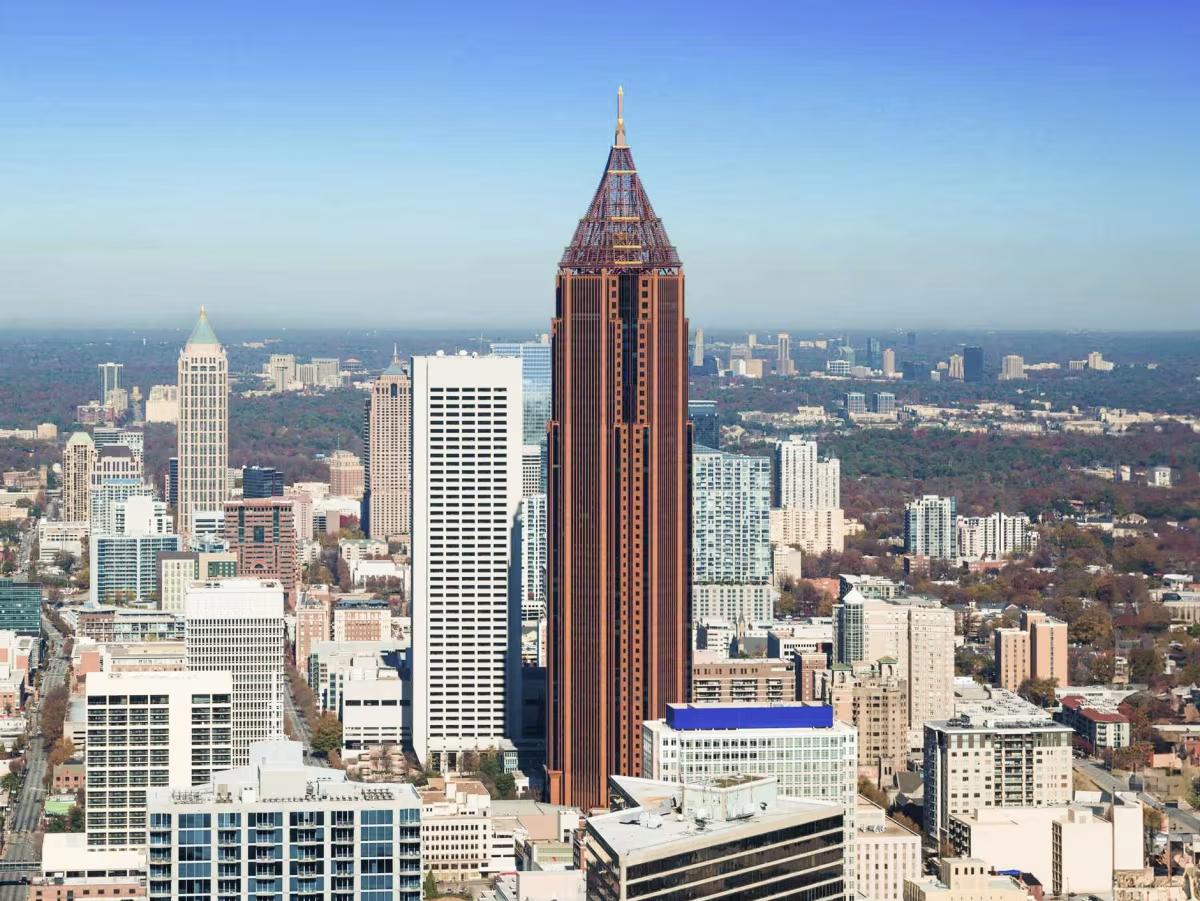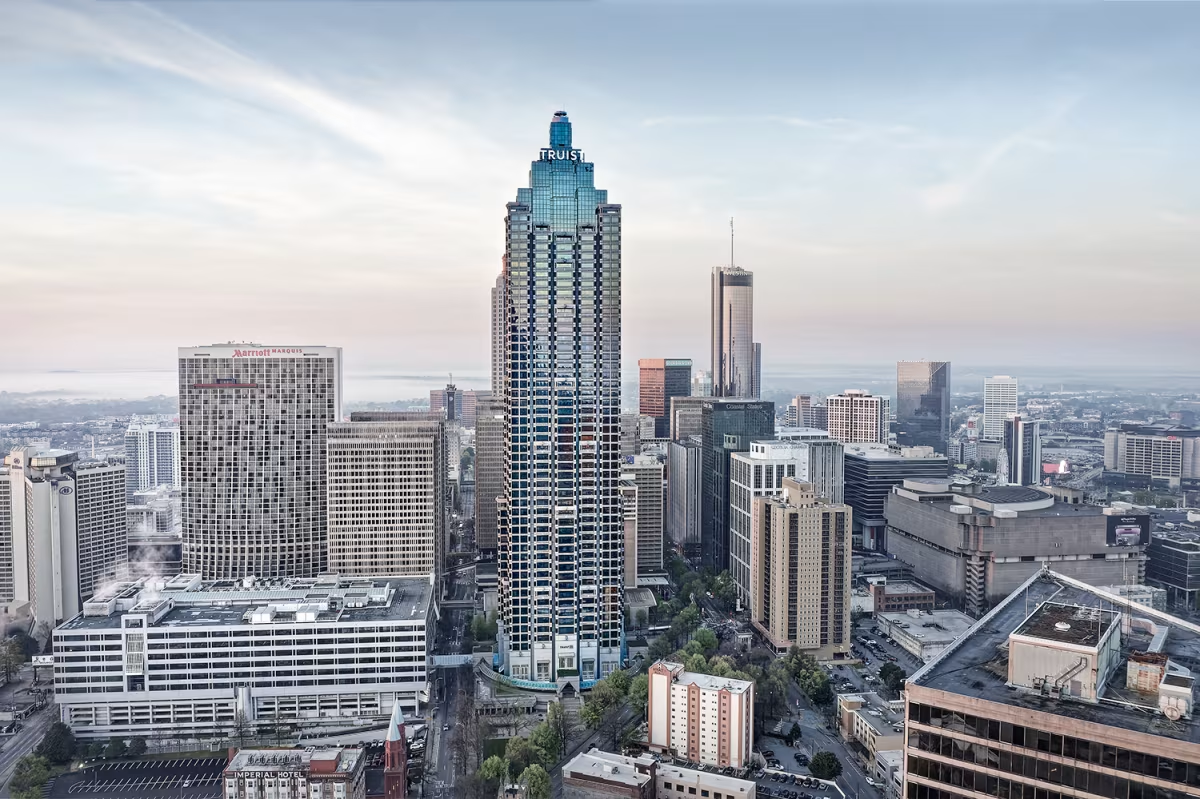Bank of America Plaza vs Truist Plaza Building


Comparing the Bank of America Plaza and the Truist Plaza Building is interesting because they both stand in Atlanta, GA, and were completed in the same year, but they were designed by different architects.
This offers a unique glimpse at how rival designers approached projects in the same city during the same era.
Height & Size
These two towers present an interesting contrast in their proportions. The Bank of America Plaza rises higher at 1024ft (312m), while the Truist Plaza Building reaches 869ft (265m). However, the Truist Plaza Building accommodates more floors with 60 levels above ground, compared to 55 floors in the Bank of America Plaza.
This suggests different approaches to interior space design. The Bank of America Plaza has an average floor-to-floor height of approximately 5.7m, while the Truist Plaza Building has more compact floors averaging around 4.4m each. The taller building's more generous floor heights might indicate grander interior spaces, higher ceilings, or different programmatic requirements.
These different proportions likely reflect the specific needs each building was designed to serve, whether driven by zoning regulations, client requirements, or the intended use of the spaces within. The contrast shows how architects can achieve different spatial experiences even when working with similar overall building scales.
Architectural Style
Both the Bank of America Plaza and the Truist Plaza Building were designed in line with the aesthetic conventions of the Postmodernism style.
Both buildings were completed when the Postmodernism style was already past its peak. This makes them feel like late echoes of the movement, more reflective of continuity or nostalgia than of cutting-edge design at the time.
Uses
Both the Bank of America Plaza and the Truist Plaza Building were designed to serve as commercial towers, and that has remained their main use since their completion, serving similar roles in the urban fabric.
The Bank of America Plaza also provides 1251 parking spaces.
Structure & Facade
The two towers rely on different structural systems, reflecting distinct engineering strategies.
The Bank of America Plaza uses a Trussed Tube In Tube structural system, which combines a central core with a perimeter tube reinforced by diagonal bracing, while the Truist Plaza Building uses a Frame system, that relies on a regular grid of columns and beams to sustain its weight.
Yet, when it comes to their facade, they both employed the same solution, a Curtain Wall facade.
A curtain wall is a non-load-bearing facade hung from the structural frame. It is anchored to floor slabs and transfers only its own weight and wind loads, allowing for sleek, glassy exteriors.
| Bank of America Plaza | Truist Plaza Building | |
|---|---|---|
| Roche Dinkeloo & Associates | Architect | John Portman & Associates |
| 1991 | Construction Started | 1989 |
| 1992 | Year Completed | 1992 |
| Postmodernism | Architectural Style | Postmodernism |
| Commercial | Current Use | Commercial |
| 55 | Floors Above Ground | 60 |
| 312 m | Height (m) | 265 m |
| 312 | Tip Height | 275 |
| 24 | Number of Elevators | 28 |
| Trussed Tube In Tube | Structure Type | Frame |
| Steel | Vertical Structure Material | Concrete |
| Concrete And Steel | Horizontal Structure Material | Concrete And Steel |
| Yes | Facade Structural? | Yes |
| Granite, Glass | Main Facade Material | Granite, Glass |
| Beers Construction | Main Contractor | J.A. Jones Construction Co. |
| Cousins Properties | Developer | John Portman & Associates |
| Environmental Systems Design, Inc. | MEP Engineer | Newcomb & Boyd |
| CBM Engineers Inc. | Structural Engineer | John Portman & Associates |
| GA | State | GA |
| Atlanta | City | Atlanta |
| 600 Peachtree Street NE | Address | 303 Peachtree Street NE |